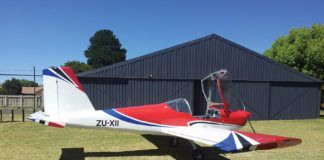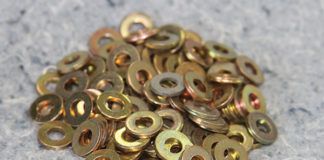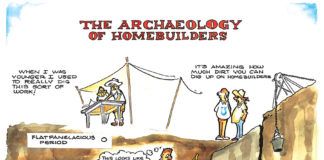Although I make a living building pretty panels for others, Im also a big advocate of cutting your own instrument panel. I know there will be some of you reading this who think its an insurmountable task, but really this is not as difficult of a project as you may think. More people can build their own instrument panels than they realize, and heres the primary reason: By the time you’re ready for the panel, you already had to master some of the same techniques and skills to build the core airframe.
The more planning you do, the easier it will be to accomplish this task. Before you begin, you need to at least have an idea of what you are going to install in the panel-but you’ve probably been planning all along. Still, you now need to determine the overall configuration of your panel. Steam gauges or glass? How much stuff in the avionics rack?
This Your Size, Sir?
After you’ve decided what you are going to install in the panel, find out if it will all fit. This can be done in a number of ways. Perhaps the first and easiest way is to simply use the old paper doll method where you gather printed images of the items you are going to install, and then tape them onto the panel. You can easily and quickly move them around until you get something set up the way you like it. Many avionics and flight instrument manufacturers have full-size color cutouts of their units available for you to use. Otherwise, you can just download them from the Internet, size them accordingly and print them out. There is no better way to know how your panel will look than to have it life-size, sitting in front of you!
There are a couple of web sites that give you the ability to lay out your panel electronically. Two of the most popular are Epanel Builder (www.epanelbuilder.com) and Xpanl (www.xpanelsoftware.com). Both sites allow you to create, store and edit multiple versions of your panel, and both have a huge catalog of equipment. Neither one has every single component you might use, but both have most of what you need to plan the panel layout. Another option is to purchase a specific software program like Panel Planner (www.panelplanner.com). At a cost of $295 this program might not be the best investment for everyone, but it is a nice tool. Our experience has been that Panel Planner is OK, but hasnt kept up with most modern equipment and panel templates. Its a bit on the expensive side when compared to the previously mentioned free web sites, and it has some quirks that sometimes make it irritating to use.
If you’re really computer literate, the best and most accurate way to lay out your panel is by using a CAD (computer-aided design) drafting tool such as AutoCad, TurboCad or any other popular CAD program. If you are building a relatively popular homebuilt, there are samples and copies of templates available for those panels available online in user-specific forums. Along with CAD, many users have found they are able to create a nice panel layout using Microsoft Visio. Both options take a lot more work to set up, but when you’re done you will have a panel layout file that is accurate down to thousands of an inch, and can often be sent to a machine shop that will cut the panel for you.
Beginning the Layout
Two aspects of panel design should be top of mind. First is the layout itself: Where does each instrument go? Well circle back to that in a minute. The second issue concerns behind-the-panel space. RVs, for example, have well-known stiffeners and substructure behind the panel that dictate where instruments and radios can be installed. Some aircraft have depth limitations from steel-tube structure, fuel tanks, canopies and such. I hope that by the time you’re scrawling your panel, you’ll know the airplane well enough to appreciate the subtleties. But measure twice, cut once still applies.
Now for the layout itself. You may think that reinventing the wheel when it comes to instrument positioning is a neat idea. Trust me, its not. Deviating from well-worn standards invites confusion in the cockpit and can, believe it or not, adversely affect the resale value of your airplane.
Weve all seen pictures of beautiful homebuilts that have instruments and switches scattered all over like some big avionics and instrument monster puked all over the panel. We call this the shotgun approach, because it looks like you loaded a shotgun and just fired the load of instruments at the panel.
Speaking of standards, lets take a look at what I mean. For flight instruments there is a standard six-pack arrangement that has become the gold standard. IFR training and flight is built around that standard, as are most of the new glass panel EFISes. There is no good reason to deviate from the standard arrangement.
Next is the radio stack. This area isn’t quite as important as the flight instruments, but it is important. The most frequently used items in the stand should be grouped together (radio, GPS and audio panel). Less frequently used items can be placed in less convenient locations (transponders, for example). Most modern glass systems have built-in engine monitors that will let you know when something is amiss, so its not nearly as important to have those particular instruments taking up valuable space in front of the pilot. But if you’re using steam-gauge engine instruments, I recommend including oil-pressure and alternator-out warning lights on the main panel.
Last is switching. This is another area where I often scratch my head in amazement. I cant think of any good reason to splatter switches all over the panel. Having them all located in one general area is far superior from a human factors standpoint than scattering them to the corners of the plane. Grouping them by specific systems or function also makes good sense, meaning that you put all of the lighting switches together, as well as avionics, ignition and others. Place switches in the order that theyll most frequently be used. For every flight, you’ll first use the key/start switch as well as the ignition, so those should be handy. Next, many of us need fuel boost pumps for priming and/or starting, so that should be next. Avionics are usually the next item to be placed online, so that switch is important. From there, figure out what gets used most often and place the switches in the related order.
Its both important and smart to place switches like Flap and Gear near to the throttle hand if possible, because those two will always get used-and they often need to be moved quickly during a missed approach or go-around. They should also be clearly marked and configured so there’s no mistaking one for the other.
Cutting a Big One
Next we need to decide what the panel is going to be made from. Aluminum is the most popular, and its easy to work with. Fiberglass or composite panels (with or without metal plates/inserts) are also popular on some kits. Some homebuilts are still made with wood panels, though that is not a good choice. Wood panels typically need to be at least an eighth of an inch or thicker to provide the necessary support, and most instruments as well as EFISes are made for panels of lesser thickness.
The two most common thicknesses for aluminum panels are 0.063 inch and 0.090 inch. Much thicker than that and you’ll have a heavy panel that makes mounting instruments difficult, and much thinner than that will result in a panel that cant support the avionics that are going to be installed. Many kits will come with at least a general panel shape already cut for you, so all you need to do is make the holes.
Here comes the fun part…cutting some holes. Don’t get too intimidated here, because its not difficult. Its certainly easier than cutting a plexiglass canopy or drilling a gear leg. If you are doing this 100% by hand, then one of the easiest ways to start is to get a nice straight and long ruler (a yardstick will even work). Some people like to put a coating of tape or other material on the panel to make it easier to write on, but we just use the old standby Sharpies to make our marks. Start by finding the center of the panel and marking a vertical line from the top to the bottom of the panel. Next, do the same thing if possible for the center of where the pilot/co-pilot will sit. From the center of the panel start drawing out a grid of 1- or 2-inch lines as references for the placement of instruments. Once you have a grid drawn, you can start to easily locate the items that will be installed.
Start with the radio stack, because typically most of the stuff has to be worked to fit around that. Standard radio stack openings are 6.25 inches wide, but there is a caveat here-you must leave some space on each side of the stack to allow for a way to mount the racks. We try to leave 0.75 inch on each side of the stack for this purpose.
Next, locate your primary flight instruments or EFISes, taking special care to leave room between the instruments to account for the space the items take up behind the panel. For example, most standard 3.125-inch instruments need at least 3.5 inches of space behind the panel. Most 2.25-inch instruments need 2.5 inches of space behind the panel. This means that you need to leave at least 0.3125 inch (5/16) between the round cutouts for the instruments to fit-but also double check your instruments. For example, the TruTrak ADIs box is slightly larger than that.
Some EFISes and engine monitors also take up additional space behind the panel, so just be aware of the width of items behind the cutout as well as what you will see. Circuit breakers are another area that people often forget take more room behind the panel. Side-to-side most breakers can be placed right against each other (or nearly so, we like to see at least a sixteenth gap between them for air movement), but remember that breakers often have tabs/ears/mounting terminals on the back, so the vertical spacing becomes important lest the bus bars or terminals from two rows end up touching each other.
Spaced Out
Forgetting about the spacing behind the panel has cost more scrapped panels (for both professional and amateur builders) than any other reason. This is where a good CAD drawing can be extremely helpful. CAD programs allow you to denote and display both the cutout and the interference measurements of the instruments behind the panel. Finding a good CAD draftsperson is difficult, but for homebuilders who are also engineers, working with such programs is relatively easy. Once you have a good CAD drawing of the panel cutouts, the file can often be supplied to any number of machine shops that will economically ($100 to $400) cut your panel with a CNC mill/router, laser or water-jet machine. This can save many hours of cutting and filing, and its our preferred method of having panels cut.
If you are unable to use a CAD program and CNC-type machine, then you need to cut your panel by hand. There are a variety of tools to accomplish the task, but big holes are most easily cut with either an appropriately sized hole saw, fly cutter or specialized instrument punch/knockout tool. To assist you in locating the screw holes correctly (the most difficult part of cutting instrument holes), several companies offer panel hole cutting templates made of steel or aluminum to assist you. Another easy tool to use is an old broken instrument from which you remove everything except the bezel, and then you use the bezel as a template for drilling and cutting holes.
The radio stack and other large square cutouts can be done by hand with a die grinder, router, jigsaw or any other tool. (Review Bob Fritzs Home Machinist installment in the March 2008 issue for a great discussion of ways to cut square holes.) Just remember to first drill a hole in each of the four corners and cut between the holes. Perfectly square corners are not something you want, because they are areas where cracks can and will start. With any of the cutouts you make, its better to err on the side of caution and make the holes smaller by a few thousands than they need to be. You can always spend time filing them out to the perfect size, but its darned hard to fix a hole or cutout that is too big.
After you’ve cut all the holes, its time to start fitting all of the equipment. Many EFISes and radios will require racks and or nutplates to be installed in the panel.
Actually most don’t technically require nutplates, but our opinion is that anywhere a screw is needed in the panel and doesn’t have a threaded unit behind it, you had better put in a nutplate. Its easy to put nuts on a bolt or screw while on the bench, but when you’re upside down under the panel trying to work on them later, you will wish you had installed nutplates! Make sure you take the time to mount each and every instrument into its specific hole. Despite there being a so-called standard for 2.25 or 3.125-inch instruments, you’ll find that the bezels and sizing can vary. Some will be tight and some will be loose, so its best to fit each one before moving forward.
One of the areas of panels where people tend to have the most difficulty is in mounting the radio stack and its associated trays. Typically you will end up with units from more than one manufacturer, and even though the standard is 6.25 inches, the actual widths of the racks can vary significantly. We like to start by stacking up all of the avionics units on the bench away from the panel. Line up all the radios and components exactly how you want them front to back and side to side. Then simply tape all the trays together with some good wide duct tape or masking tape. Now when you remove the radios the trays should maintain their original positioning.
Place your new stack into the panel cutout you previously made and determine where the attachment points to the panel are going to be. We like to use 0.75×0.75 aluminum angle for the mounting of racks. We run a piece vertically on both sides of the stack, screwed or riveted directly to the panel. With those angles in place, and your taped together radio stack inserted into the rack mounting angles on the panel, you can mark the holes for each tray with a Sharpie. You can also choose to drill directly through the holes in the trays if you want, but note that this only works with a good 90 drill and a steady hand.
After you’ve drilled the holes in the mounting racks, you can now bolt them into the angles and you should be done! You can choose to mount the trays with screws and nuts or nutplates, whichever you prefer. Nutplates are more work initially, but make life much easier when the panel is in the airplane.
Steins Three Rules
Rule number one: Thou shall not randomly place instruments and switches all over the panel in a haphazard and sporadic manner. It looks bad, its hard to fly behind, and it cheapens the value of your plane.
Rule number two: Thou shall decide on the equipment you are putting in your panel and vow not to change your mind until you’re done. Trying to modify the panel before the plane is done just to keep up with the latest gadgets will cause a lot of headaches and waste a lot of time.
Rule number three: Thou shall not make your panel larger than it needs to be. Lately Ive seen a lot of RV panels that are many inches deeper than required. Its a waste of legroom and a waste of material, which equals a waste of weight. And it just isn’t necessary on most installations. Even with the biggest Garmin G900X EFIS screens, you don’t need to add more than about an inch to the bottom of a panel.
We have talked about a lot of high concepts here, and I hope its been useful. Stay with us next month, when well demonstrate how to make some of the more basic circular cutouts. (I will defer to Bob Fritzs excellent story in the March issue for ways to make rectangular cutouts on your own.) There are many ways to hog out your basic hole-we know, we’ve tried them all-but Ill show you how to perform instrument cutouts with precision and safety.
If you have specific questions for author Stein Bruch, or have certain projects youd like us to cover, email us at [email protected] with About Avionics in the subject line.













